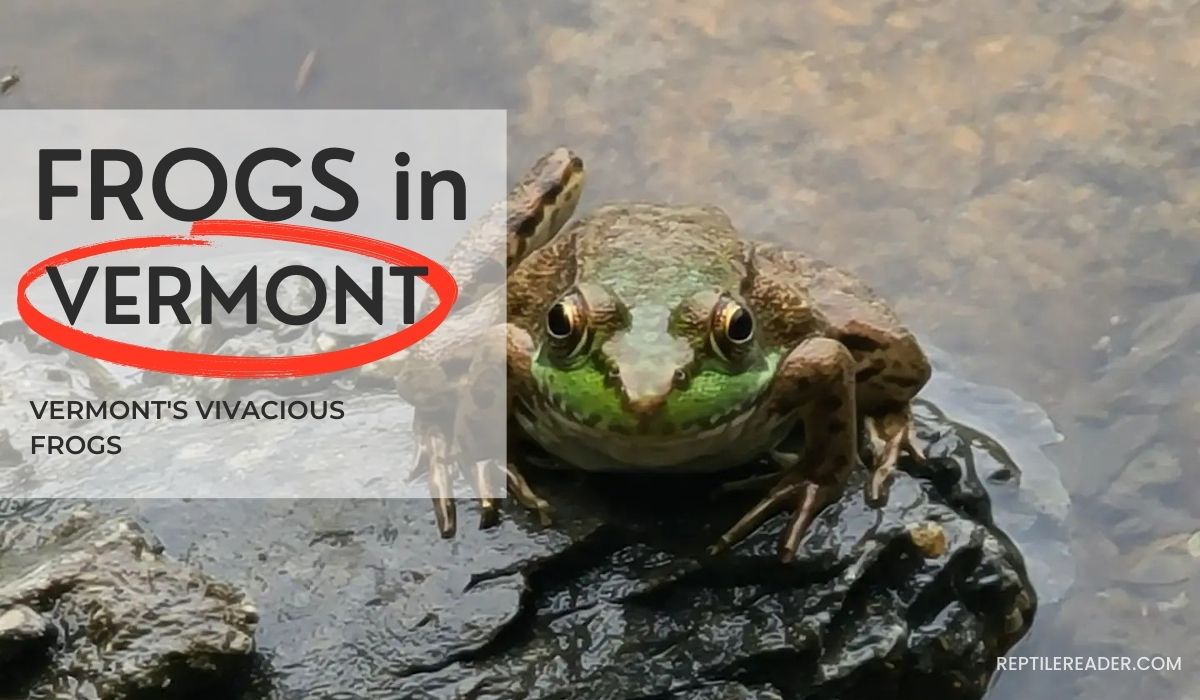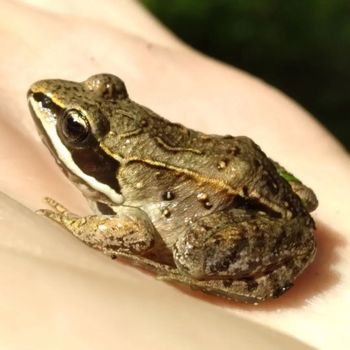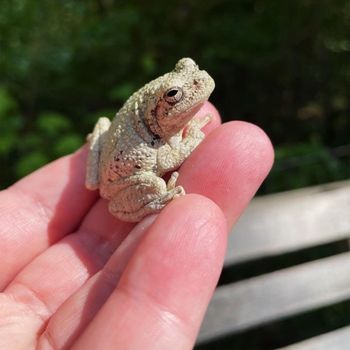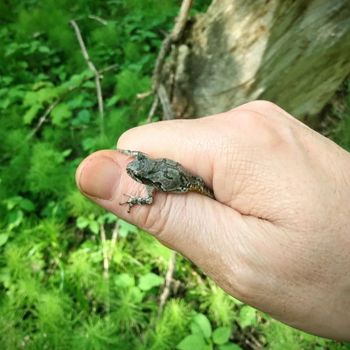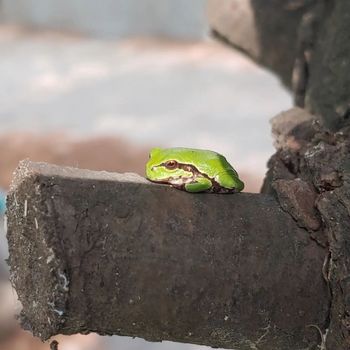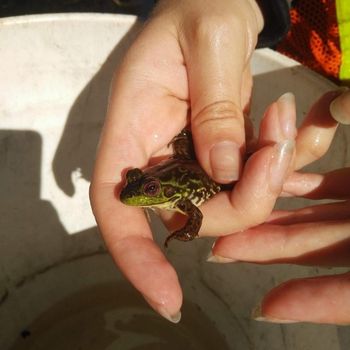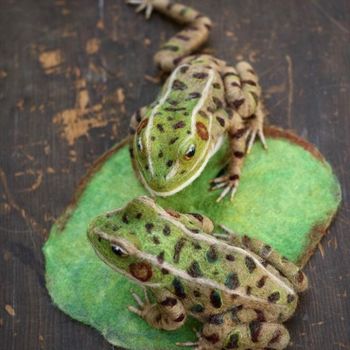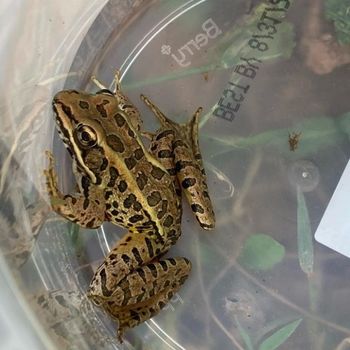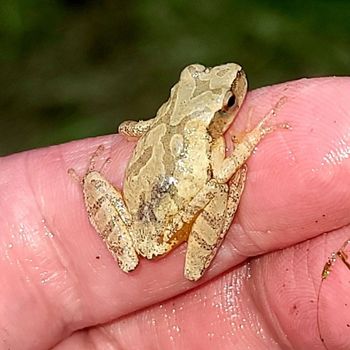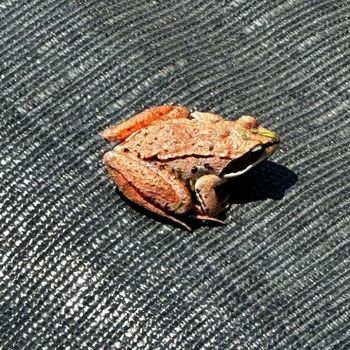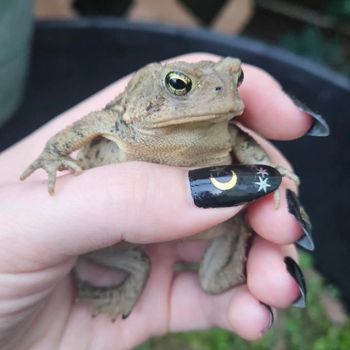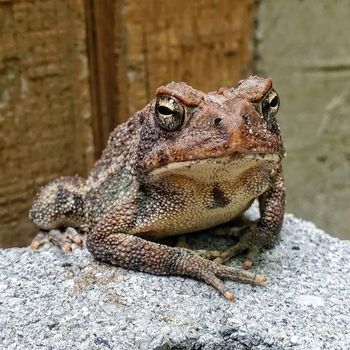Frogs in Vermont: Vermont’s Vivacious Frogs
Did you know that Vermont is home to quite an impressive variety of our favorite amphibian friends? That’s right – you can actually find 12 different species hopping around the Green Mountain State!
From the picturesque ponds to the enchanting forests, Vermont’s diverse ecosystems provide perfect habitats for these charming creatures. So, grab your binoculars and let’s take a closer look at some of the amazing frogs you can meet in this beautiful state.
In this article, we’ll introduce you to each of these fascinating species, share some fun facts about them, and even give you some tips on where to spot them. Happy frog hunting!
| # | Name | Details | Image |
| 1 | American Bullfrog (Lithobates catesbeianus) |
| 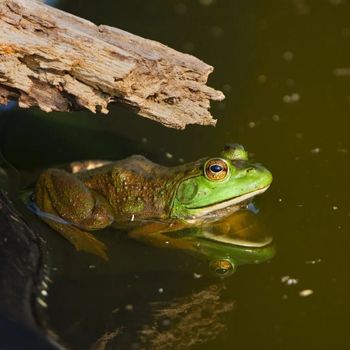 |
| 2 | Boreal Chorus Frog (Pseudacris maculata) |
| 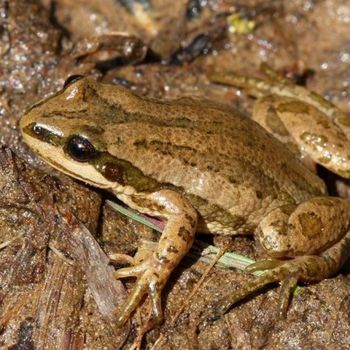 |
| 3 | Cope’s Gray Tree Frog (Hyla chrysoscelis) |
| 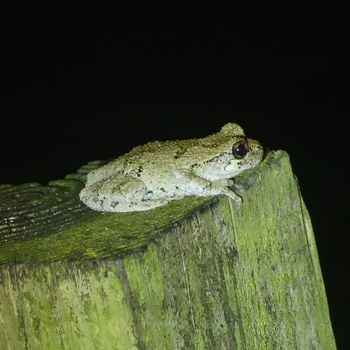 |
| 4 | Gray Tree Frog (Hyla versicolor) |
| 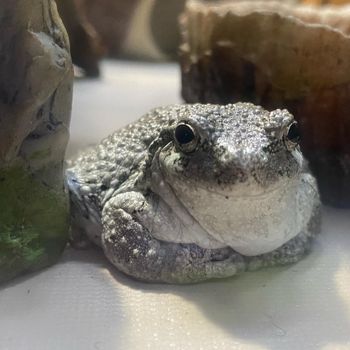 |
| 5 | Green Frog (Lithobates clamitans) |
| 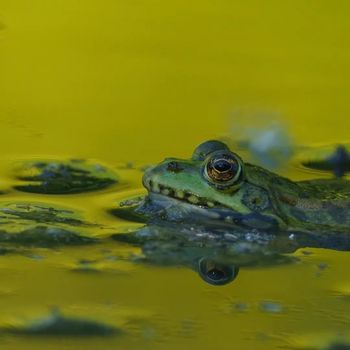 |
| 6 | Mink Frog (Lithobates septentrionalis) |
| 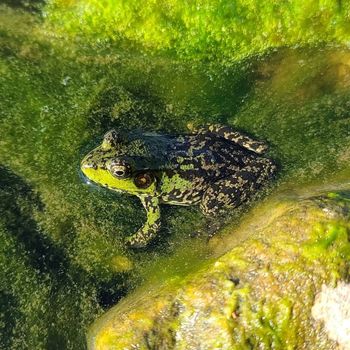 |
| 7 | Northern Leopard Frog (Rana pipiens) |
| 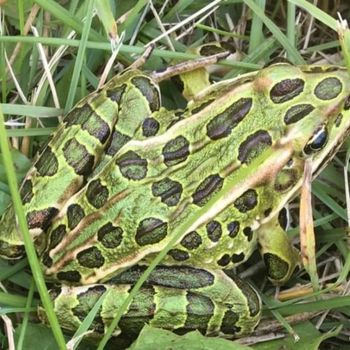 |
| 8 | Pickerel Frog (Lithobates palustris) |
| 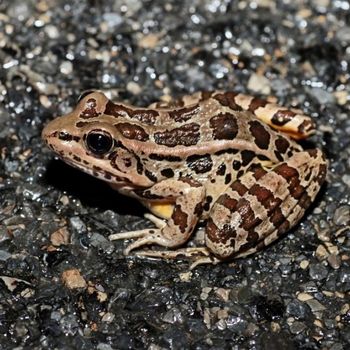 |
| 9 | Spring Peeper (Pseudacris crucifer) |
| 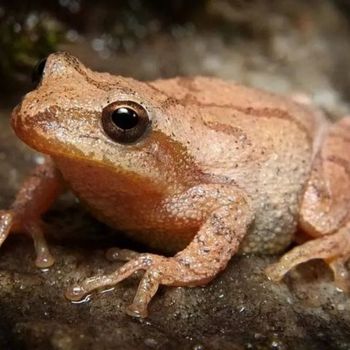 |
| 10 | Wood Frog (Rana sylvatica) |
| 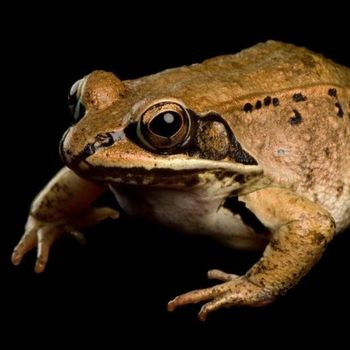 |
| 11 | American Toad (Anaxyrus americanus) |
|  |
| 12 | Fowler’s Toad (Anaxyrus fowleri) |
| 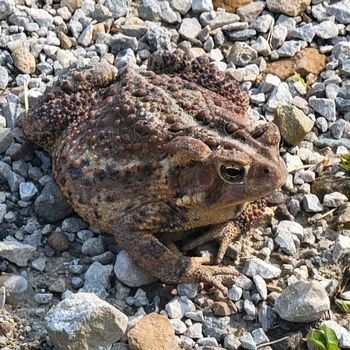 |
12 Frog Species You Can Find in Vermont
Get ready to dive deep into the lives of 12 incredible frog species that call Vermont their home, showcasing their unique adaptations and remarkable behaviors.
1. American Bullfrog
- Scientific Name: Lithobates catesbeianus
- Common Name: American bullfrog
- Size: 3.5-6 inches (9-15 cm)
- Color & Pattern: Green to brown with dark spots and patterns
- Natural Habitat: Ponds, lakes, marshes, slow-moving streams
- Geographic Range: Eastern and central united states, canada, mexico, introduced worldwide
- Diet: Fish, crustaceans, insects, small mammals, birds, other amphibians
- Reproduction: Breeds in aquatic habitats, lays eggs in flat surfaces on water
- Vocalization: Deep, low-pitched calls by males during breeding
- Adaptation: Highly adaptable, strong legs for jumping and swimming
- Conservation Status: Least concern
Immerse yourself in the world of the American Bullfrog (Lithobates catesbeianus), a striking amphibian with a size ranging from 3.5 to 6 inches (9-15 cm). Adorned in a rich palette of green to brown, they exhibit dark spots and patterns which serve as excellent camouflage within their habitat. These aquatic creatures can leap and swim with grace and strength, due to their powerful legs.
Dwelling in the eastern and central United States, Canada, Mexico, and various regions around the world, they call ponds, lakes, marshes, and slow-moving streams their home. They satiate their hunger with a diverse diet of fish, crustaceans, insects, small mammals, birds, and other amphibians. The American Bullfrog is even known to be cannibalistic, predating on native species in introduced areas.
During breeding season, male Bullfrogs exclaim deep, low-pitched calls to attract mates, resulting in them laying their eggs in flat surfaces on the water for successful reproduction. Despite being a significant predator, their conservation status remains of least concern and they continue to thrive, showcasing their impressive adaptability. Delve deeper into the world of this fascinating amphibian, and uncover more about its unique quirks and captivating existence.
2. Boreal Chorus Frog
- Scientific Name: Pseudacris maculata
- Common Name: Boreal chorus frog
- Size: 0.8-1.6 inches (2-4 cm)
- Color & Pattern: Gray, brown or green with dark stripes on the back and sides
- Natural Habitat: Marshes, grasslands, wet meadows
- Geographic Range: Northwestern united states and canada
- Diet: Small insects, spiders, and other invertebrates
- Reproduction: Breeds in shallow water, lays eggs attached to vegetation
- Vocalization: Series of ascending, short trills
- Adaptation: Able to change color for camouflage, strong climbers
- Conservation Status: Least concern
Hidden in the marshes, grasslands, and wet meadows of northwestern United States and Canada, the small creature with a big voice, the Boreal Chorus Frog, thrives. Although diminutive in size, measuring only 0.8-1.6 inches, their distinct colors and patterns of gray, brown, or green with dark stripes on the back and sides allow them to stand out in their environment. Pseudacris maculata, as they’re known in the scientific community, have an impressive ability to change their color for camouflage and are remarkable climbers.
Surviving primarily on small insects, spiders, and other invertebrates, these talented amphibians lay their eggs attached to vegetation in shallow water, filling the surrounding area with a series of ascending, short trills to establish their presence. Fascinatingly, these frogs have developed concentrated antifreeze proteins that allow them to endure freezing temperatures – a vital adaptation in their often chilly habitat.
Fortunately, the conservation status of this Vermont resident is deemed the least concern due to their versatile adaptations and stable population, ensuring these interesting creatures remain an essential part of their ecosystem.
3. Cope’s Gray Tree Frog
- Scientific Name: Hyla chrysoscelis
- Common Name: Cope’s gray tree frog
- Size: 1.0-2.0 inches (2.5-5.1 cm)
- Color & Pattern: Gray, green or brown with darker spots or patches, white underside
- Natural Habitat: Forests, swamps, wooded areas
- Geographic Range: Eastern united states and southeastern canada
- Diet: Insects, spiders, small invertebrates
- Reproduction: Breeds in freshwater habitats, lays eggs on water surface
- Vocalization: Short, rapid trills by males during breeding season
- Adaptation: Ability to change color, cling to surfaces, freeze-tolerance
- Conservation Status: Least concern
Perched high among the trees in the eastern United States and southeastern Canada, the enchanting Cope’s Gray Tree Frog thrives (Hyla chrysoscelis). With a petite frame of 1.0-2.0 inches (2.5-5.1cm), this shy creature can blend seamlessly into its surroundings, changing colors from gray, green, or brown with darker accents, while sporting a pristine white underside.
Feasting on insects, spiders, and other small invertebrates, the Cope’s Gray Tree Frog builds its life amid dense forests, swamps, and other wooded areas. As for reproduction, they embrace their love affair with water, breeding in freshwater habitats and laying their eggs on the surfaces of various bodies of water. This delicate creature takes part in a melodious symphony, with males contributing short, rapid trills during the breeding season.
Possessing an array of astounding adaptations, these frogs residing in Vermont can not only change color, but also cling to surfaces with ease and display an exceptional freeze-tolerance. In fact, they are known to survive even when partially frozen. With a conservation status of “least concern,” the enigmatic Cope’s Gray Tree Frog perseveres, occasionally venturing to the ground, but more often gracing the treetops with its whimsical charm.
4. Gray Tree Frog
- Scientific Name: Hyla versicolor
- Common Name: Gray tree frog
- Size: 1.1-2 inches (3-5 cm)
- Color & Pattern: Gray, brown, or green with irregular markings, white spots under eyes
- Natural Habitat: Deciduous forests, shrubby areas, swamps, meadows
- Geographic Range: Eastern north america (canada to texas)
- Diet: Insects, spiders, small invertebrates
- Reproduction: Breeds in temporary and permanent freshwater habitats, lays eggs on floating plants
- Vocalization: Males produce musical trills during breeding
- Adaptation: Ability to change color, sticky toe pads for climbing
- Conservation Status: Least concern
Hidden within the deciduous forests, swamps, and meadows of eastern North America lies the elusive Hyla versicolor, a remarkably adaptable frog commonly known as the Gray Tree Frog. Gracefully climbing through their habitats with their sticky toe pads, these frogs exhibit an artistic mastery of disguise, changing from gray to brown or green, adorned with irregular markings and mysterious white spots concealing their bright eyes.
Spanning a petite 1.1-2 inches in size, Gray Tree Frogs feast daintily on insects, spiders, and small invertebrates. When it’s time to reproduce, they seek out temporary and permanent freshwater habitats, laying their precious eggs on floating plants. As males serenade their partners with musical trills, their unique adaptations ensure their survival amongst both the branches and the underbrush.
Braving harsh winters and freeze-tolerant, these adaptable creatures prove that beauty and nature’s artistry flourish even in the depths of adversity. Their skill and resilience has thankfully kept them far from the brink of extinction, a delightful testament to the magnificent wonders of the natural world.
5. Green Frog
- Scientific Name: Lithobates clamitans
- Common Name: Green frog
- Size: 2.3-3.5 inches (5.8-8.9 cm)
- Color & Pattern: Dark green or olive green with small dark spots
- Natural Habitat: Ponds, marshes, lakeshores, slow-moving streams
- Geographic Range: Eastern united states and canada
- Diet: Aquatic insects, snails, crustaceans, small fishes
- Reproduction: Breeds in shallow freshwater habitats, lays eggs in clusters
- Vocalization: Deep, bass-like calls by males during breeding
- Adaptation: Highly aquatic, powerful hind legs for jumping and swimming
- Conservation Status: Least concern
Behold the vibrant Lithobates clamitans, better known to us earthlings as the Green Frog! Its striking, dark green or olive green hue, accented by tiny spots, easily captivates the eye – a stunning inhabitant of the ponds, marshes, lakeshores, and slow-moving streams across Eastern United States and Canada. This exquisite amphibian masters the art of camouflage with a size ranging from 2.3 to 3.5 inches (5.8-8.9cm).
As a natural-born gourmet, the Green Frog feasts on a delectable menu of aquatic insects, snails, crustaceans, and small fishes. Cunning and creative, it seeks out shallow freshwater habitats for breeding, laying clusters of eggs as a part of its ingenious reproduction cycle. And, oh, how they serenade! The males’ deep bass-like calls enchant during the breeding season, as their bright yellow vocal sacs visually delight.
Frogs that are designed to jump and swim with their powerful hind legs, these phenomenal creatures are highly aquatic by nature. Perhaps the most fascinating facts linger in their ability to magically regenerate lost limbs, forming an extraordinary evolutionary edge. Fear not for their future, as they are classified with a conservation status of “Least Concern.” Our enchanting Green Frog will continue to leap and swim, astonishing us for years to come.
6. Mink Frog
- Scientific Name: Lithobates septentrionalis
- Common Name: Mink frog
- Size: 1.5-2.5 inches (3.8-6.35 cm)
- Color & Pattern: Green or brown with leopard-like spots
- Natural Habitat: Freshwater habitats, ponds, lakes, rivers
- Geographic Range: Northeastern north america (great lakes, eastern canada)
- Diet: Aquatic invertebrates, insects, spiders, snails
- Reproduction: Breeds in shallow water, lays eggs in clusters
- Vocalization: Short musical chuckling or low croaking call
- Adaptation: Highly aquatic, especially adept at swimming
- Conservation Status: Least concern
Enchanting observers with its green or brown leopard-like spots, this little 1.5 to 2.5-inch creature is perfectly dressed for its freshwater soiree at ponds, lakes, and rivers, from the Great Lakes to eastern Canada.
A true nocturnal maestro, the Mink Frog often serenades its listeners with a short, musical chuckling, or low croaking call. This delightful performance has earned it the nickname, “Banjo Frog.” While usually found cavorting in shallow waters, these frogs are highly aquatic and quite skilled at swimming, traits they use to expertly hunt their diet of aquatic invertebrates, insects, spiders, and snails.
In their moonlit gatherings, Mink Frogs breed and lay clusters of eggs to propagate future generations of their species. Fortunately, with a conservation status of “Least Concern,” it appears the choir of Banjo Frogs will continue to enchant freshwater habitats with their enchanting presence and melodies for years to come.
7. Northern Leopard Frog
- Scientific Name: Rana pipiens
- Common Name: Northern leopard frog
- Size: 2.0-4.3 inches (5.1-11 cm)
- Color & Pattern: Green or brown with dark spots circled by a lighter border
- Natural Habitat: Marshes, swamps, grasslands, wetlands
- Geographic Range: Canada and the united states (alaska to new mexico)
- Diet: Insects, spiders, small crustaceans, other invertebrates
- Reproduction: Breeds in shallow, well-vegetated freshwater habitats, lay eggs in clusters attached to vegetation
- Vocalization: Snore-like call by males during breeding
- Adaptation: Long, powerful legs for jumping, partially webbed hind feet for swimming
- Conservation Status: Least concern
These captivating creatures are perfectly suited for life in marshes, swamps, grasslands, and wetlands, stretching from Alaska to New Mexico in North America. Their partially webbed hind feet allow them to swim gracefully, while their long, powerful legs support impressive jumping abilities.
With a main diet of insects, spiders, small crustaceans, and other invertebrates, these voracious eaters keep their habitats in Vermont lively. During breeding season, these frogs settle in shallow, well-vegetated freshwater habitats, and females lay eggs in clusters attached to vegetation. To attract a mate, male frogs serenade their companions with a unique, snore-like vocalization.
Remarkably, the Northern Leopard Frog is capable of surviving being frozen, an unparalleled adaptation contributing to their classification as “Least Concern” in conservation statuses. However, it is worth noting that habitat loss may lead to a decline in future populations. Overall, these fascinating frogs continue to enchant us with their beauty, resilient nature, and captivating behaviors.
8. Pickerel Frog
- Scientific Name: Lithobates palustris
- Common Name: Pickerel frog
- Size: 1.5-3 inches (3.8-7.6 cm)
- Color & Pattern: Greenish-brown with parallel rows of dark square spots
- Natural Habitat: Woodlands, marshes, grassy wetlands, near streams and ponds
- Geographic Range: Eastern north america (canada to eastern u.s.)
- Diet: Various insects, spiders, and small invertebrates
- Reproduction: Breeds in freshwater habitats, lays egg masses on vegetation
- Vocalization: Low-pitched snore-like calls by males during breeding
- Adaptation: Produces skin secretions toxic to some predators, strong jumper
- Conservation Status: Least concern
Introducing the captivating Lithobates palustris, commonly known as the Pickerel Frog, a charming amphibian adorned with greenish-brown hues and striking parallel rows of dark square spots. Measuring 1.5-3 inches in size, this agile wonder thrives in the woodlands, marshes, and grassy wetlands of eastern North America, from Canada to the Eastern U.S., often found near streams and ponds.
An omnivorous creature, the Pickerel Frog dines on an array of insects, spiders, and small invertebrates. During reproduction, these remarkable frogs can be heard emitting low-pitched, snore-like calls as they breed in freshwater habitats and delicately lay their egg masses on surrounding vegetation. Boasting incredible adaptations, this frog not only produces skin secretions toxic to some predators, but is also a strong jumper.
Though currently of least concern in terms of their conservation status, the Pickerel Frog boasts a fascinating, and somewhat daunting, fact. Their toxins are harmful to other amphibians, which may lead them to devour smaller frog species. Despite this, the Lithobates palustris remains an intriguing and captivating creature of North America’s wetlands.
9. Spring Peeper
- Scientific Name: Pseudacris crucifer
- Common Name: Spring peeper
- Size: 0.75-1.5 inches (1.9-3.8 cm)
- Color & Pattern: Brown or green with an x-shaped mark on the back
- Natural Habitat: Woodlands, swamps, marshes
- Geographic Range: Eastern north america (canada to the southeastern united states)
- Diet: Insects, spiders, small invertebrates
- Reproduction: Breeds in freshwater habitats, lays eggs attached to vegetation
- Vocalization: High-pitched peeping call by males during breeding
- Adaptation: Freeze tolerance, nocturnal, adhesive toe pads for climbing
- Conservation Status: Least concern
Their intriguing brown or green skin is adorned with an X-shaped mark on their back, making them a small, nocturnal, woodland wonder. Inhabitants of woodlands, swamps, and marshes, these captivating creatures can be found all over Eastern North America, from Canada down to the southeastern United States.
Feasting on a diet of insects, spiders, and small invertebrates, these little frogs expertly navigate their environment using their adaptive toe pads for climbing. With harmonious high-pitched peeps, male Spring Peepers beckon their mates dutifully during the breeding season. Upon finding the perfect freshwater haven, these frogs lay their eggs attached to vegetation, continuing the cycle of life.
A true testament to nature’s resilience, Spring Peepers boast incredible freeze tolerance that allows them to survive temperatures up to -8°C (18°F). Although their conservation status remains listed as “Least Concern,” their enchanting presence serves as a reminder of nature’s awe-inspiring, adaptable beauty.
10. Wood Frog
- Scientific Name: Rana sylvatica
- Common Name: Wood frog
- Size: 1.4-3.7 inches (3.5-7.6 cm)
- Color & Pattern: Tan or brown with dark mask around eyes and back leg stripe
- Natural Habitat: Woodlands, bogs, swamps
- Geographic Range: North america, from alaska to new england, and south to northern georgia
- Diet: Insects, spiders, worms, slugs, snails
- Reproduction: Breeds in freshwater habitats, lays eggs in clusters attached to vegetation
- Vocalization: Males make a duck-like quacking sound during breeding
- Adaptation: Ability to freeze and thaw as a means to survive cold conditions
- Conservation Status: Least concern
Meet the captivating Rana sylvatica, commonly known as the Wood Frog, a forest-dwelling amphibian with an exquisite flair for blending into its surroundings. Sporting a fashionable tan or brown, adorned with a dark mask around its eyes, and a sleek stripe on its back legs, this petite creature ranges from 1.4-3.7 inches in size (3.5-7.6 cm). Its range spans North America, from the bustling wilds of Alaska to New England, with southern settlers in northern Georgia.
A gourmand of small delicacies, the Wood Frog feasts on a varied menu consisting of insects, spiders, worms, slugs, and snails. Its breeding rituals take place in the serene freshwater habitats it calls home, laying its precious eggs in clusters that find attachment on submerged vegetation. The debonair males serenade potential mates with duck-like quacking during these amorous encounters.
The true pièce de résistance of this incredible species is their unparalleled ability to freeze and thaw, permitting survival in harsh, cold conditions. Amidst this extraordinary talent, the Wood Frog is not considered at risk with a conservation status deemed of least concern. The fascinating life of the Wood Frog unfolds with eggs hatching within mere weeks, showcasing their resilient nature and true wonder.
11. American Toad
- Scientific Name: Anaxyrus americanus
- Common Name: American toad
- Size: 2-4.5 inches (5-11.4 cm)
- Color & Pattern: Varied brown, gray, or green with darker spots or patches
- Natural Habitat: Forests, fields, suburban areas
- Geographic Range: Eastern north america (canada to mexico)
- Diet: Insects, spiders, snails, small invertebrates
- Reproduction: Breeds in freshwater habitats, lays eggs attached to vegetation
- Vocalization: High-pitched trilling call by males during breeding
- Adaptation: Parotoid glands secrete toxin, can inflate themselves
- Conservation Status: Least concern
The delightful Anaxyrus americanus is commonly known as the American Toad. A medium-sized creature, stretching 2 to 4.5 inches (5-11.4 cm) in length, this charming amphibian sports a varied wardrobe of brown, gray, or green, adorned with darker spots or patches. Adapted to a range of habitats, including forests, fields, and suburban areas, it can be found croaking its way across eastern North America, from Canada to Mexico.
Armed with a voracious appetite, these intriguing l’il toads are the knights of the night, serving as important insect controllers. As nocturnal hunters, their diet consists of insects, spiders, snails, and other small invertebrates. When the time comes to multiply their forces, they breed in freshwater habitats and lay their eggs, spending their days singing a high-pitched, trilling serenade.
Fear not, for these cute-looking critters are packed with an array of impressive adaptations. Equipped with parotoid glands, they ooze a secret toxin when threatened, and can even inflate themselves to defy predators. Currently enjoying a stable environment, the conservation status of the American Toad is of “Least Concern.” Yet, their fascinating nighttime escapades make them an awe-inspiring addition to our ecosystem.
12. Fowler’s Toad
- Scientific Name: Anaxyrus fowleri
- Common Name: Fowler’s toad
- Size: 2-3 inches (5-7.6 cm)
- Color & Pattern: Gray, brown or green with dark spots and a pale stripe down the back
- Natural Habitat: Woodland areas, sandy coastal plains, grasslands, urban areas
- Geographic Range: Eastern united states and southeastern canada
- Diet: Insects, spiders, worms, small invertebrates
- Reproduction: Breeds in shallow freshwater habitats, lays eggs in strands attached to vegetation
- Vocalization: Short, nasal-like call by males during breeding
- Adaptation: Parotoid glands secrete toxin, can burrow to stay cool and moist
- Conservation Status: Least concern
Anaxyrus fowleri, commonly known as Fowler’s Toad, is a petite, nocturnal amphibian measuring only 2-3 inches in length. Boasting an earthy color palette of gray, brown, or green, this well-camouflaged toad sports dark spots and a pale stripe down its back, seamlessly blending into its woodland, coastal, and grassland habitats throughout Eastern United States and Southeastern Canada.
These adaptive, solitary creatures feast on insects, spiders, worms, and small invertebrates, employing their parotoid glands to secrete toxin as a brilliant defense mechanism. By digging burrows to stay cool and moist, Fowler’s Toad can adapt to various environments, even urban areas. Their survival strategy has paid off, with their conservation status ranked as “Least Concern.”
The males, distinguished by their nasal-like call, perform a short vocalization to court females during breeding season. Once the pair breeds in shallow freshwater, the female carefully lays her eggs in strands, attaching them to surrounding vegetation. With their intriguing behavioral patterns and stealthy appearance, Fowler’s Toad is undoubtedly an endearing and vital member of nature’s diverse network.
Nearby States:
Are the Frog Species in Montana Similar to the Ones Found in Vermont?
While both Montana and Vermont host various frog species, they differ due to distinct habitats and climates. Montana’s mysterious frog population thrives in more rugged, arid environments, while Vermont frogs are more common in wet, forested areas. These ecological variations influence the frog behavior and species in both regions.
Do Frogs in Vermont and Virginia Share Similar Habitats and Characteristics?
Frogs in Vermont and Virginia share some common habitats like wetlands, ponds, and forests, although the climates differ. Frogs in virginia typically experience a milder climate with longer activity periods, while Vermont’s colder winters can influence their hibernation behaviors. Both regions support diverse frog species thriving in aquatic and semi-aquatic environments.
What Species of Frogs Can Be Found in Vermont?
In Vermont, you can find a variety of frog species, including the iconic green frog, wood frog, and northern leopard frog. These amphibious creatures are an essential part of Vermont’s ecosystem and provide vital contributions to the environment. Explore Vermont’s natural beauty and discover its diverse wildlife, including Colorado’s amphibian beauty.
Final Words
In summary, Vermont boasts a remarkable array of 12 diverse frog species, displaying a kaleidoscope of colors, patterns, and unique adaptations. Embark on a fascinating journey through their habitats, appreciating their distinctive vocalizations, and uncover the secret lives of these magnificent amphibians that grace the state of Vermont. From the vibrant call of the spring peeper to the subtle camouflage of the wood frog, each species plays a vital role in maintaining the ecological balance of Vermont’s wetlands, forests, and ponds. While Vermont is home to this impressive variety, frogs in Montana also exhibit a remarkable diversity that reflects the rugged and varied landscapes of the region. Both states offer valuable opportunities for nature lovers to explore the hidden worlds of these captivating amphibians.

